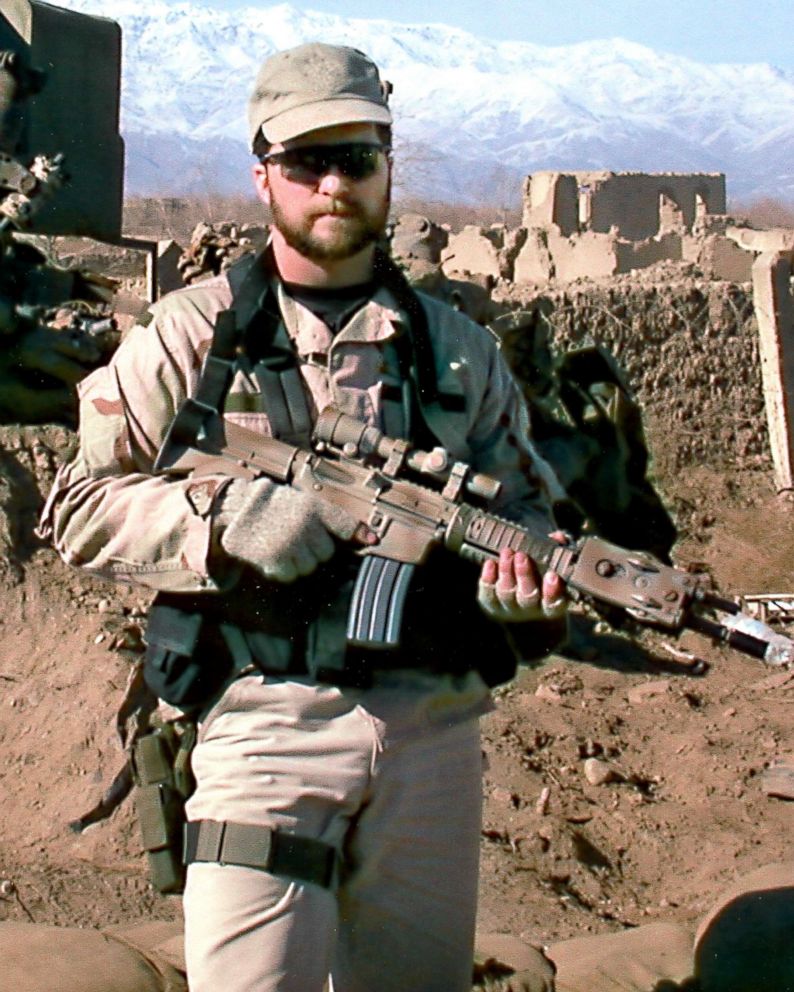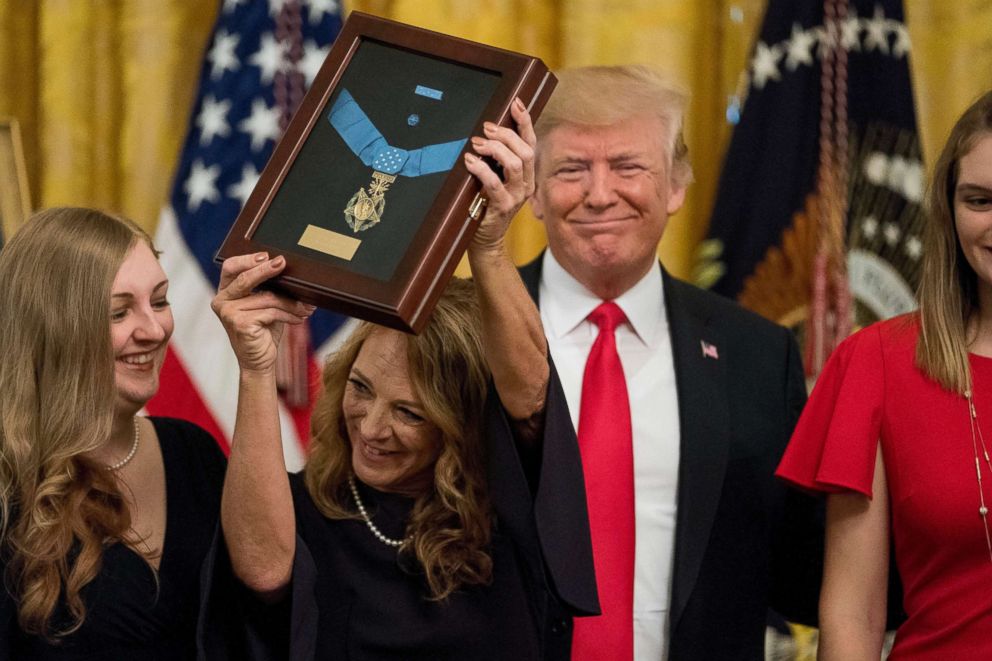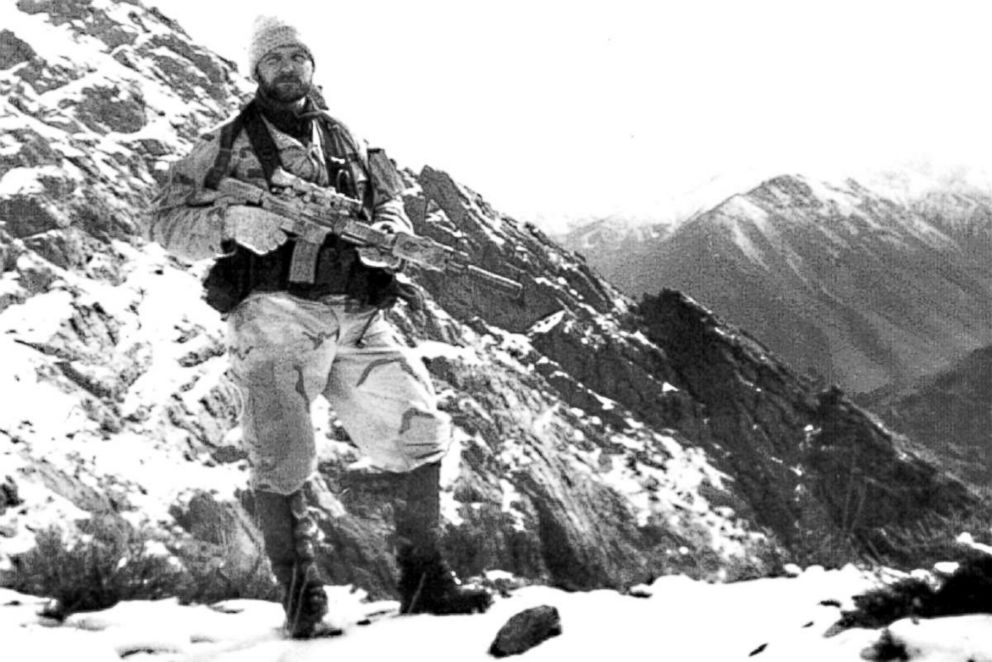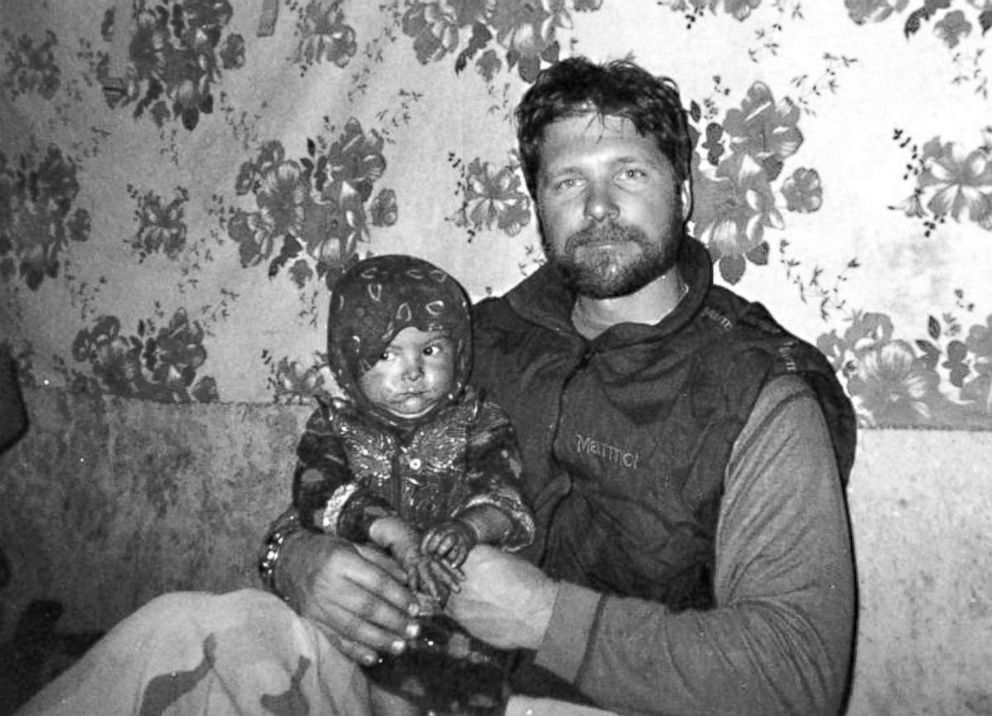Trump awards Medal of Honor to airman who saved teammates from al-Qaeda attack despite being gravely wounded
Air Force Tech Sgt. John Chapman was posthumously awarded the Medal of Honor
President Donald Trump awarded the Medal of Honor to Air Force Tech Sgt. John Chapman Wednesday for his valiant actions during a controversial 2002 mountainside battle in Afghanistan known as Roberts Ridge.
Chapman single-handedly fought off al-Qaeda militants, protecting his teammates, but was gravely wounded. His teammates, who said they thought Chapman had been killed, left him behind on the mountain, but he fought on, only later succumbing to his injuries.
Chapman is just the 19th airman to be awarded the Medal of Honor since the creation of the Air Force in 1947, and the first airman to receive the award for actions occurring since the Vietnam War.
“Through his extraordinary sacrifice, John helped save more than 20 American servicemembers,” Trump said.

Chapman was part of a rescue team looking for a teammate who had fallen out of a Chinook helicopter during a mission to destroy al-Qaeda and Taliban forces fortified in mountainous positions in eastern Afghanistan in March 2002.
Trump detailed Chapman’s heroic achievements, from volunteering to deploy to Afghanistan after 9/11, to leaving the safety of a cleared bunker on that mountain in Afghanistan to face militants alone in a second bunker.
“As John fired on the second bunker he was shot and fell to the ground and lost consciousness. John regained consciousness and continued to fight on and he really fought, we have proof of that fight. Good genes, you have good genes,” Trump said to Chapman’s two daughters.

Trump said he met with Chapman’s family, including his wife, daughters, mother, siblings and in-laws in the Oval Office prior to the presentation. Upon receiving the Medal of Honor, Chapman’s wife Valerie held the commemorative case aloft, to share the moment with her husband’s teammates, many of whom attended the ceremony.
“In his high school yearbook, John quoted these words: ‘Give yourself before taking of someone else.’ Very far-sighted. John lived by that motto every single day, everybody that knew him said that’s the way he lived,” Trump said.
During that March 2002 mission, Chapman and his team were dropped from a helicopter at nighttime, onto a deep snow-covered mountain at 11,000 feet altitude, and were immediately fired upon by al-Qaeda fighters from three sides.
Before landing, Chapman had been tasked with moving north, and unexpectedly encountered two al-Qaeda bunkers. Alone, Chapman engaged al-Qaeda fighters in the first bunker, giving his teammates time to take cover from enemy fire coming from the second bunker. Chapman then fired at al-Qaeda fighters in the second bunker, and was wounded and incapacitated, according to an Air Force investigation of the incident. Reporters were briefed on the investigation.

“His charging the bunker up allowed rest of team to move up behind a rock, a big boulder that provided the little bit of cover that allowed his team to continue to fight,” said a Special Tactics Officer who was involved in the Air Force review of Chapman's actions briefed to reporters. “That’s why his team said that his actions in charging up that bunker is what allowed the team to live.”
Chapman’s teammates, believing him dead, pulled back from the location. But Chapman later regained his ability to fight.
When Chapman saw another Chinook rescue helicopter approaching the area, about to take RPG fire from al-Qaeda fighters on a mountain ridge, Chapman stood up with his back to machine-gun fire from fighters in the second bunker to take out the fighters on the ridge. The enemy in the second bunker delivered the fatal shots, according to forensic analysis of Chapman’s body, which was later recovered from the battle site.
The Chinook sustained some fire but was able to land. “It’s easy to imagine there would be a high potential for there to be catastrophic loss of the helicopter if he had not been engaging the enemy as the helicopter was on its approach,” said the Special Tactics Officer.

Defense Secretary Jim Mattis determined Chapman volunteered for the daring rescue mission in enemy territory and exposed himself to enemy machine-gun fire within 10 meters with complete disregard for his own safety, satisfying the criteria for the Medal of Honor.
“If John hadn’t engaged the first enemy position, it would have surely killed us all before we reached cover,” an eyewitness on Chapman’s team told Air Force investigators.
Retired Master Chief Special Warfare Operator Britt Slabinski, a Navy SEAL Team Six leader, also received the Medal of Honor for his actions during this battle, which has become referred to as “Roberts Ridge.”
The battle has been shrouded in controversy for years, after reports that Slabinski and his team abandoned Chapman on the mountain while he was still alive.
An Air Force team carried out a 30-month review of the incident. Video from an MQ-1 Predator drone and two AC-130 reconnaissance planes proved critical to the investigation.
Multiple sources close to Slabinski told ABC that the Seal Team 6 leader did not believe Chapman, his own tent-mate in camp, was alive when the team withdrew from the mountaintop.
In an interview with Breaking Defense writer James Kitfield, Slabinski said he crawled to Chapman to check for signs of life. “I didn’t get anything out of John,” Slabinski said.
Slabinski has previously said he supports Chapman receiving the Medal of Honor. Members of Chapman’s family attended Slabinski’s Medal of Honor ceremony. Slabinski attended Wednesday's ceremony.
“You realize that this person made those sacrifices knowing he wouldn’t be coming home to his kids, what that must have gone through his head in that moment to jump out of a bunker with that machine gun behind is kind of awe-inspiring,” said the Special Tactics Officer.




